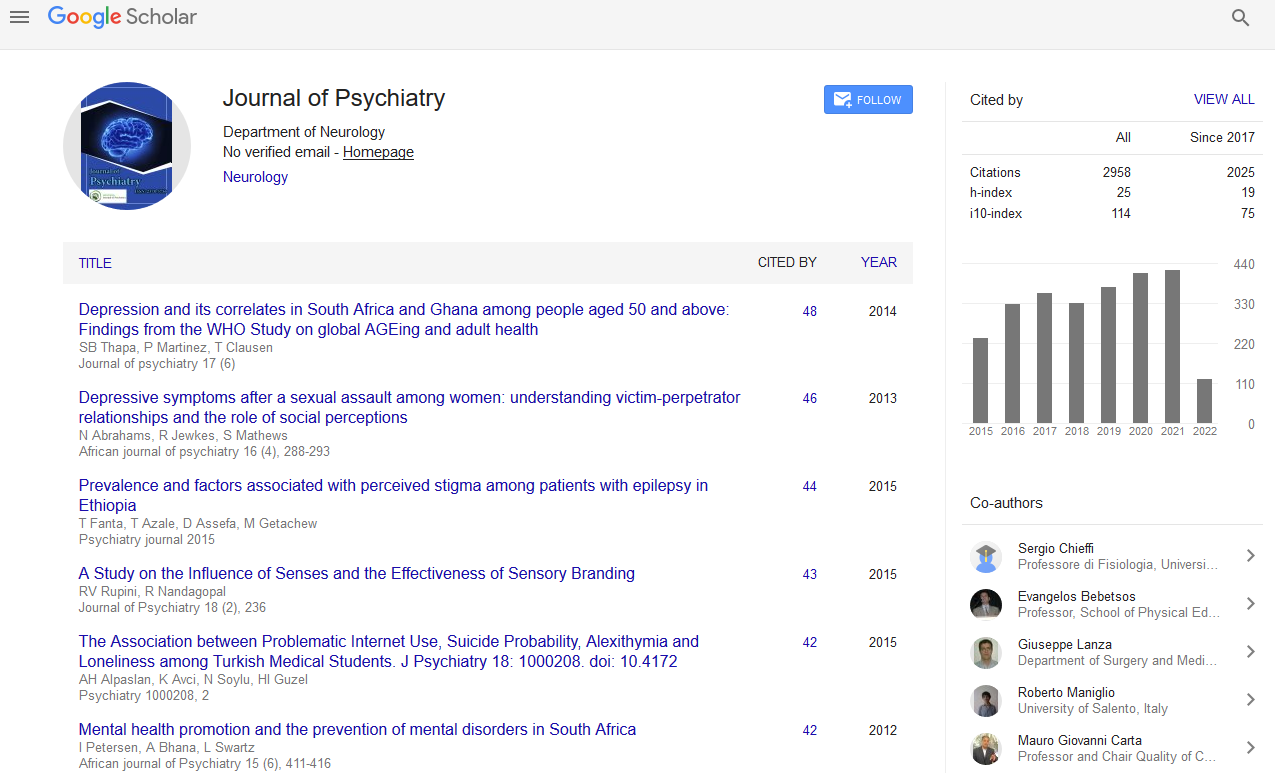PMC/PubMed Indexed Articles
Indexed In
- RefSeek
- Hamdard University
- EBSCO A-Z
- OCLC- WorldCat
- SWB online catalog
- Publons
- International committee of medical journals editors (ICMJE)
- Geneva Foundation for Medical Education and Research
Useful Links
Share This Page
Open Access Journals
- Agri and Aquaculture
- Biochemistry
- Bioinformatics & Systems Biology
- Business & Management
- Chemistry
- Clinical Sciences
- Engineering
- Food & Nutrition
- General Science
- Genetics & Molecular Biology
- Immunology & Microbiology
- Medical Sciences
- Neuroscience & Psychology
- Nursing & Health Care
- Pharmaceutical Sciences
A classification of mental disorders based on temperament
Joint Event on World Congress on Psychiatry & Psychological Syndromes & 29th International Conference on Adolescent Medicine and Child Psychology
December 06-07, 2018 | Rome, Italy
Mohammad Nadi Sakhvidi, Fatemeh Hosseini and Mohsen Naseri
Shahid Sadoughi University of Medical Sciences and Health Services,Iran
Shahed University, Iran
Posters & Accepted Abstracts: J Psychiatry
Abstract:
Statement of the Problem: Theories about psychiatric disorders ranging from personality disorders to neurotic and psychotic disorders continue to be developed; indeed sometimes a various paradoxical theories exist. This research was aimed to establish a more comprehensive overall approach by combining past views and present ideas in psychiatry. Methodology & Theoretical Orientation: This basic study examined ancient medical books in an attempt to reveal significant features in the theory of temperament that may help to resolve the ambiguities that exist in new psychiatric theories. Given the large volume of literature available, we used more reliable, trusted and newer sources. The Canon of Avicenna and Kaplan and Sadock???s Comprehensive Textbook of Psychiatry were the most important and frequently consulted books in this study. Findings: Based on bio psychological activity and flexibility, four groups of temperaments were identified: high activehigh flexible; high active-low flexible; low active-low flexible; and low active-high flexible. When temperament deteriorates personality, non-psychotic and psychotic psychiatric disorders can develop. Conclusion & Significance: Temperament can provide a basis for the classification of psychiatric disorders. Temperament, personality, non-psychotic and psychotic psychiatric disorders can be placed in a spectrum based on temperament.
Biography :
E-mail: Drnadis@gmail.com


